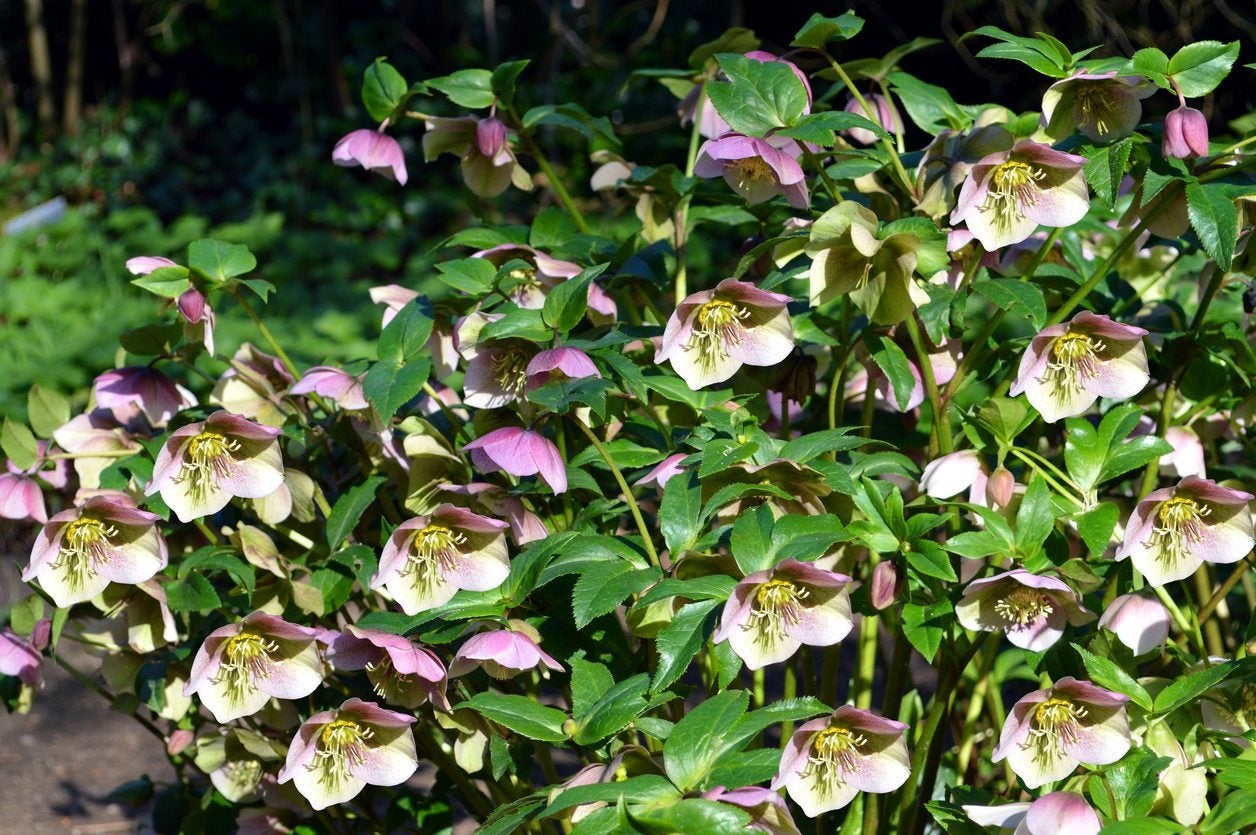Oriental Hellebore Info – Learn About Growing Oriental Hellebore Plants


What are oriental hellebores? Oriental hellebores (Helleborus orientalis) are one of those plants that make up for all the shortcomings of the other plants in your garden. These evergreen perennials are long blooming (late winter – mid spring), low maintenance, tolerant of most growing conditions, and generally pest-free and deer-resistant. Not to mention they add a whole lot of aesthetic appeal to a landscape with their large, cup-shaped, rose-like, nodding flowers. I think I need to pinch myself to convince myself that this plant is real. It certainly sounds too good to be true! Read on to find out more oriental hellebore info and what is involved with growing oriental hellebore plants.
Oriental Hellebore Info
Word of Caution – As it turns out, there is just one aspect of hellebore, commonly referred to as Lenten rose or Christmas rose, which is not so rosy. It is a toxic plant and is poisonous to humans and pets if any plant parts are ingested. Other than this, there does not seem to be any other significant negative characteristics for growing oriental hellebore plants, but this is something you will definitely want to take into consideration particularly if you have young children.
Oriental hellebores originated in Mediterranean regions such as northeastern Greece, northern and northeastern Turkey, and Caucasus Russia. Rated for USDA hardiness zones 6 to 9, this clump-forming plant typically grows 12 to 18 inches (31-46 cm.) high with a spread of 18 inches (46 cm.). This winter blooming plant features five, petal-like sepals in an array of colors that include pink, burgundy, red, purple, white, and green.
In terms of lifespan, you can reasonably expect it to adorn your landscape for at least five years. It is very versatile in a landscape, as it can be planted en masse, used as a border edging, or as a welcome addition to rock or woodland garden settings.
How to Grow Oriental Hellebores
While oriental hellebores tolerate most growing conditions, they will grow to their maximum potential when planted in a partially shaded location protected from cold winter winds in soil that is neutral to slightly alkaline, rich, and well-draining. A full-shade location is not conducive to flower production.
When planting, space plants at least 18 inches (46 cm.) apart and position the oriental hellebores in the ground so that the top of their crowns are ½ inch (1 cm.) below the soil level. Following this guideline will ensure that it is not planted too deeply, affecting flower production later.
In terms of hydration, be sure to maintain soil that is evenly moist and keep the plants well-watered the first year. A light application of granular, balanced fertilizer is recommended in early spring when the flowers appear to give the plants a nice boost.
Gardening tips, videos, info and more delivered right to your inbox!
Sign up for the Gardening Know How newsletter today and receive a free copy of our e-book "How to Grow Delicious Tomatoes".
Propagation is made possible by the division of the clumps in early spring or via seeds.

Shelley Pierce was a writer for Gardening Know How, contributing to hundreds of articles for the site.
-
 Types Of Tomatoes Explained: Explore The Many Wonderful Shapes, Colors, Flavors, & Best Uses
Types Of Tomatoes Explained: Explore The Many Wonderful Shapes, Colors, Flavors, & Best UsesThe world of tomato varieties is vast and fascinating. Learn about the key types to grow in your garden, tailored to your preferences and space.
By Amy Grant
-
 Try The Trend – Turn Any Bed Into A Keyhole Garden With This Clever In-Ground Composter
Try The Trend – Turn Any Bed Into A Keyhole Garden With This Clever In-Ground ComposterKeyhole gardening is an efficient and sustainable practice that saves space. Get started on this DIY project quickly and easily with an in-ground composter.
By Bonnie L. Grant